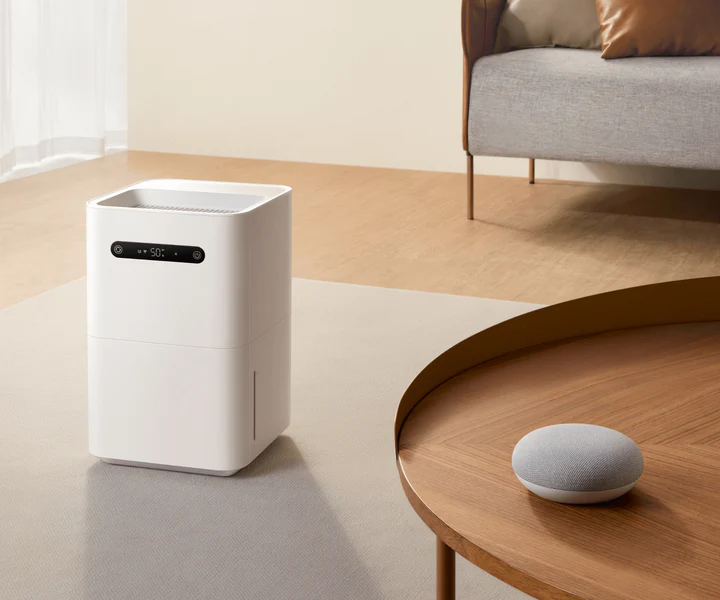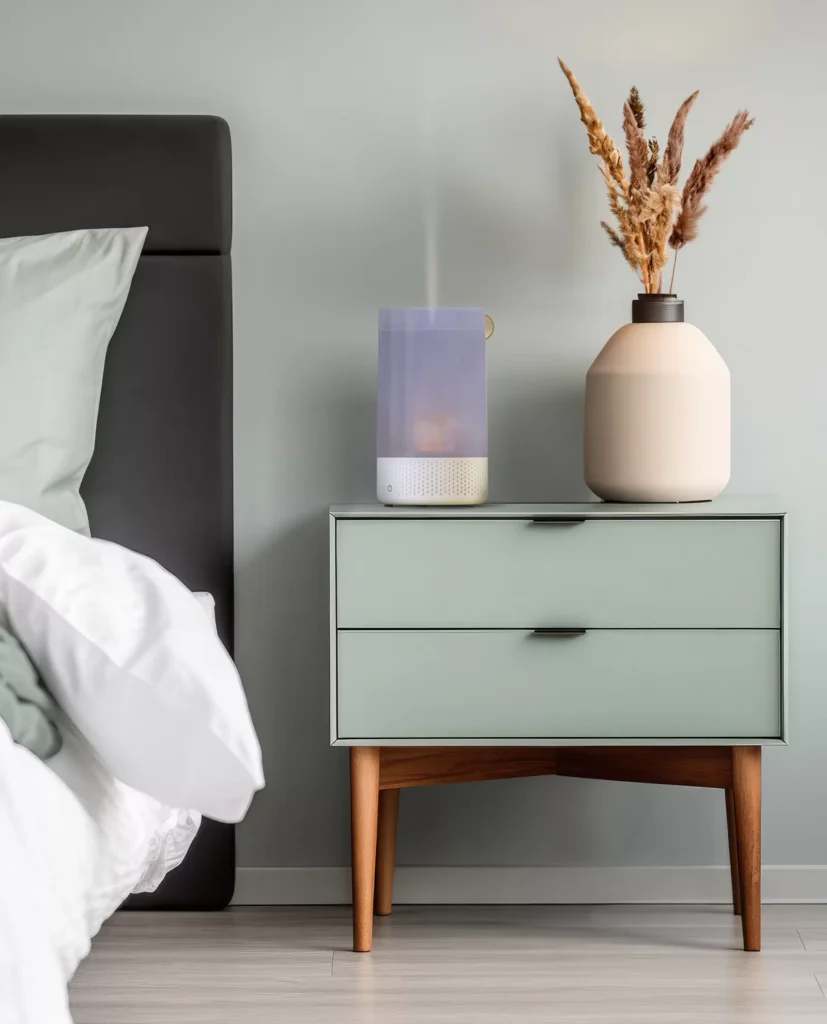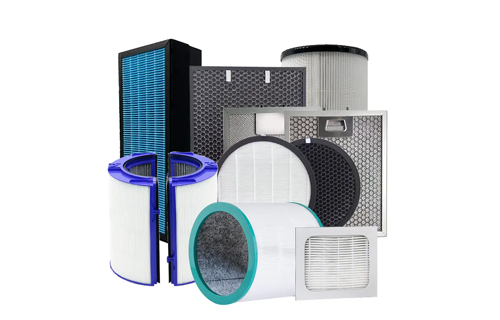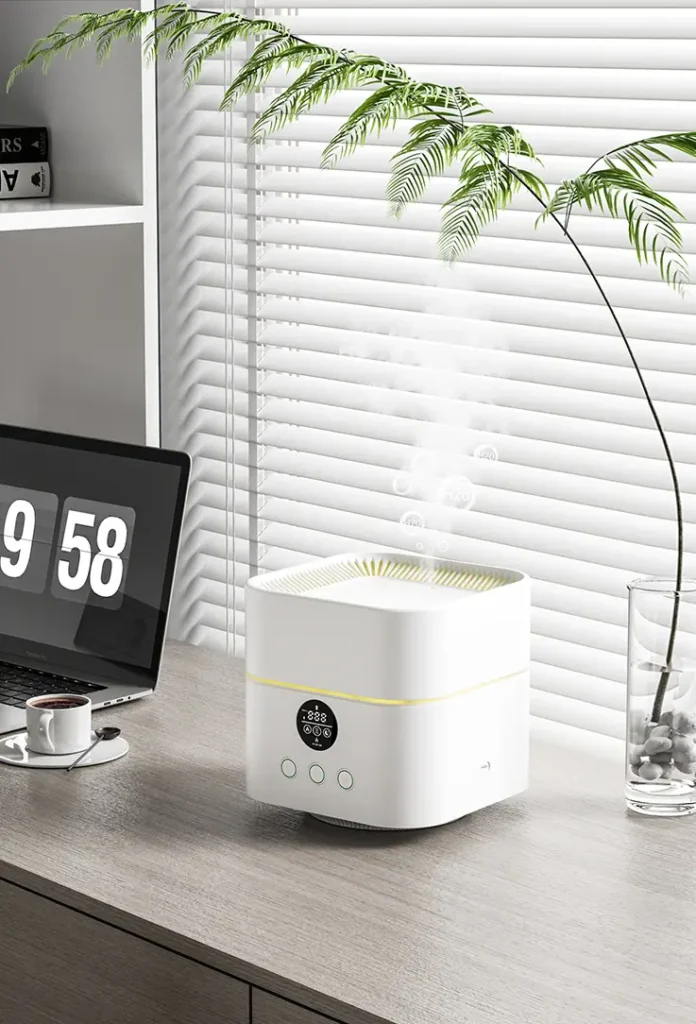Le radon est un gaz naturel. Cependant, le danger survient lorsqu'il pénètre dans votre maison et commence à se développer et à augmenter. Découvrez ci-dessous comment éliminer et atténuer le radon dans vos espaces intérieurs !
Le radon est un gaz produit par certains métaux, comme l'uranium. Il est présent dans les sols, les roches et les eaux souterraines. On peut dire sans risque qu'il y a du radon autour de nous, mais seulement à des niveaux sûrs.
Cependant, il faut garder à l'esprit que le radon peut pénétrer dans les maisons et les bâtiments. Une fois qu'il y est entré, il peut s'accumuler et se développer au fil du temps. Des niveaux élevés de radon sont liés à diverses maladies respiratoires, telles que le cancer. Vous ne voudriez pas vous exposer à une situation aussi pénible.
Poursuivez votre lecture afin d'en savoir plus sur le radon et les stratégies d'atténuation pour le contrôler, y compris l'utilisation de purificateurs d'air de haute qualité.
D'où vient le radon ?

Source de l'image : iStockphoto
Le radon est un gaz radioactif produits par la décomposition de l'uranium, du radium et du thorium. Ces métaux sont radioactifs et sont généralement présents dans les eaux souterraines, les roches et le sol. Le radon étant produit dans le sol, son existence n'est pas anormale. En effet, nous y sommes exposés.
En outre, le radon peut également circuler dans les eaux de surface, les eaux souterraines et l'air. Il est donc probable que le radon puisse également pénétrer dans votre conduite d'alimentation en eau. Il est intéressant de noter que la concentration de radon dans l'eau provenant de puits est plus élevée que dans l'eau provenant de sources superficielles.
En outre, le radon est présent dans le gaz naturel, en particulier dans le gaz qui a été en contact avec de l'uranium souterrain ou de la roche ou du sol contenant du radon. Le radon se mélange à l'air et se propage dans les conduites de distribution et de service. Il est donc probable que le radon soit présent dans les appareils de chauffage, les chauffe-eau, les chaudières et les poêles.
Les dangers du radon apparaissent lorsque vous y êtes exposé pendant une longue période et en grandes quantités. Vos antécédents de fumeur peuvent également déclencher des facteurs de risque de maladies liées au radon. Installer grands purificateurs d'air est nécessaire pour minimiser votre exposition au radon.
Est-il normal d'avoir du radon dans l'air ?

Source de l'image : iStockphoto
Oui. Le radon n'est pas un gaz fabriqué par l'homme. D'un point de vue scientifique, le radon est une émanation naturelle de l'environnement. Par exemple, il est présent dans le sol et les roches. Le processus de combustion des combustibles fossiles et du charbon libère également du radon.
Le seul problème est que le niveau de radon est trop élevé. Selon les experts, le niveau de sécurité du radon ne devrait pas dépasser 4,0 pCi/L. Mais ce niveau est déjà alarmant. N'oubliez pas que le niveau moyen de radon à l'extérieur n'est que de 0,4 pCi/L. Les mesures d'atténuation sont donc importantes.
Le radon peut-il être dangereux ?

Source de l'image : Unsplash
Oui. Une exposition prolongée et excessive au radon est certainement nocive pour la santé.
Lorsque le radon pénètre dans le corps, le gaz produit des radiations dans les poumons. Selon les experts, de petites quantités de radon ne sont pas si graves. S'il en est autrement, les choses deviennent problématiques.
Le radon endommage les parois des poumons au niveau cellulaire. Pour cette raison, une personne exposée au radon court un risque élevé de développer un cancer du poumon. D'après les données disponibles, environ 20 000 décès liés au cancer du poumon sont dus à l'exposition au radon. Bien que les décès liés à la cigarette soient encore plus nombreux, ces chiffres restent significatifs.
Il est donc erroné de minimiser les risques que le radon peut présenter pour la santé. Il convient de s'en préoccuper correctement.
Zones communes de la maison où le radon est présent
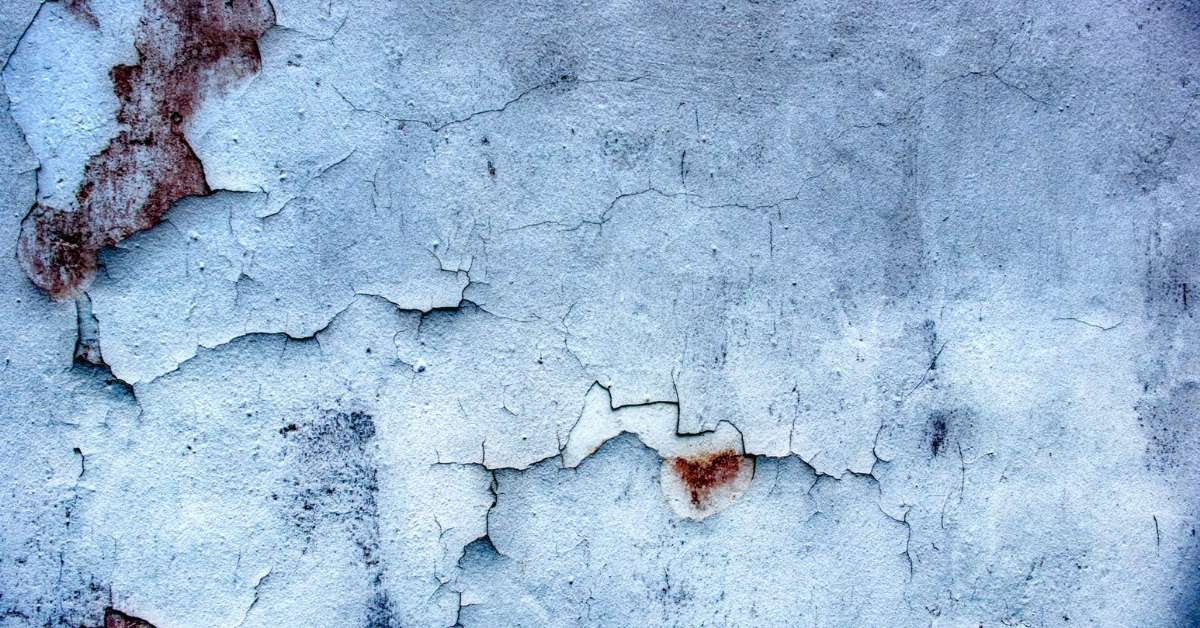
Source de l'image : Unsplash
Le radon est un type de gaz. Sa perméabilité lui permet donc de pénétrer facilement dans les maisons et les bâtiments. Certaines parties de votre propriété peuvent être traversées par le radon. En voici quelques-unes.
Fissures sur les sols en béton
Le radon étant généralement émis dans le sol, il est inévitable qu'il se fraye un chemin jusqu'aux planchers. Par conséquent, si le sol de vos vides sanitaires ou de vos sous-sols présente des fissures, il est probable que le gaz s'y infiltre. Il est donc essentiel de réparer ces joints pour empêcher le radon de pénétrer dans vos espaces.
Fissures sur les murs
Il est alarmant de constater que le radon peut pénétrer dans votre maison même si le revêtement de sol est parfaitement étanche. S'il y a des trous et des fissures dans les murs, le radon peut y pénétrer. Là encore, il est important que vous puissiez mettre en place des stratégies d'atténuation pour que vos murs restent imperméables à la pénétration du radon. Si vos murs commencent à se fissurer, réparez-les immédiatement.
Mais même s'il n'y a pas de fissures, le radon peut toujours pénétrer dans les murs. Plus précisément, il peut passer par les cavités des dalles ou des blocs. Les sceller correctement est le moyen d'empêcher ce gaz nocif d'entrer.
Joints sur les conduites de service
Les tuyaux de branchement de votre maison sont également des portes d'entrée pour le radon. Dans certains cas, les interstices sont trop grands, ce qui permet au gaz de se faufiler et de pénétrer dans vos espaces de vie. Des entrepreneurs professionnels peuvent vous aider à résoudre ce problème.
Vides sanitaires
Tant qu'il y a des vides dans les vides sanitaires, le radon peut y pénétrer. Ces aspirateurs attirent les substances gazeuses sous eux. Même si votre vide sanitaire est équipé d'évents, il est probable que les petites ventouses se fassent la malle. Par conséquent, ils absorbent le radon et le diffusent progressivement dans votre maison.
Pourquoi la purification du radon est-elle importante ?
Le radon présente de nombreux risques pour la santé, surtout en cas d'exposition prolongée. Par exemple, le radon peut augmenter le risque de développer un cancer. C'est la raison même pour laquelle vous devez faire de votre mieux pour contrôler ou supprimer sa présence dans votre maison.
Le radon étant un élément auquel nous ne voulons pas être confrontés, il est essentiel que nous disposions de mécanismes d'atténuation efficaces. L'utilisation de purificateurs d'air est une approche que vous pouvez essayer. Pour ceux qui ont un grave problème de radon, il est indispensable de faire appel à des spécialistes de l'élimination du radon.
Ajouter un purificateur d'air pour se débarrasser du radon
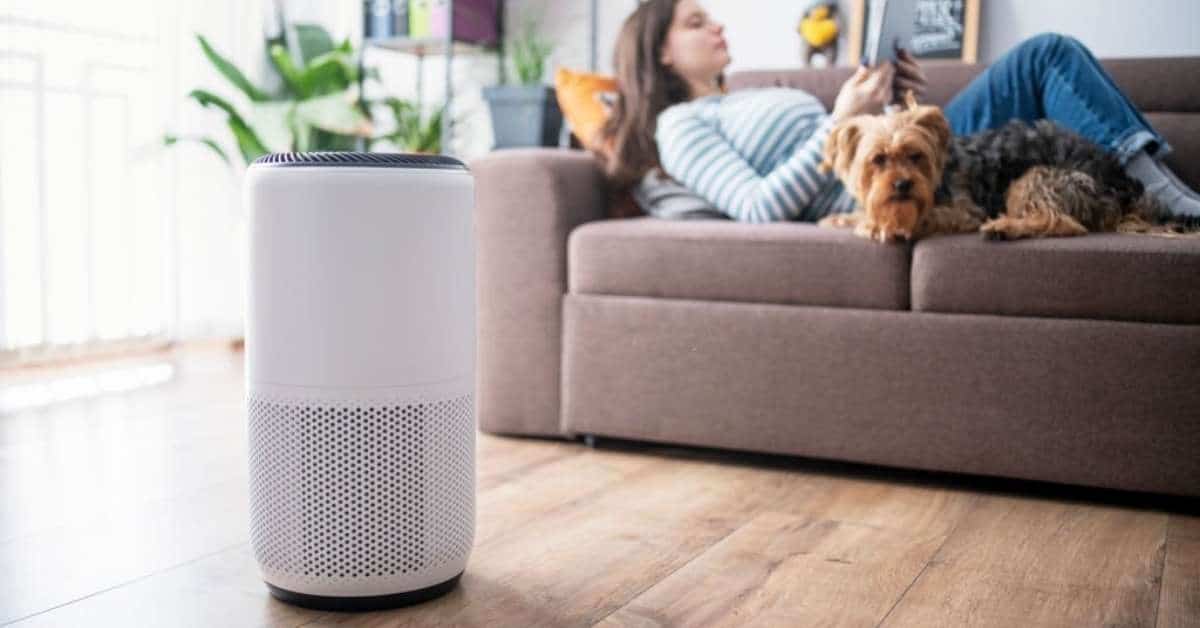
Source de l'image : iStockphoto
Les purificateurs d'air sont des appareils essentiels pour les maisons et les propriétés présentant des problèmes de radon. Bien sûr, ces purificateurs d'air peuvent ne pas être en mesure de traiter des niveaux élevés de radon. Mais vous pouvez être sûr que ces appareils peuvent contribuer à contrôler leur propagation.
Grâce à ces purificateurs d'air, vous réduisez les risques d'exposition au radon. Lisez la suite pour en savoir plus sur ces purificateurs d'air et les avantages qu'ils apportent à la qualité de l'air intérieur.
Pourquoi un purificateur d'air est-il important pour améliorer la qualité de l'air ?
La pollution de l'air intérieur est un problème d'actualité. En effet, il existe une pléthore de contaminants à l'intérieur et à l'extérieur de nos maisons, bâtiments et propriétés. Les moyens normaux de purification de l'air, tels que l'ouverture des fenêtres ou l'aspiration régulière, ne permettent pas de traiter ces polluants en suspension dans l'air.
Les particules, les substances gazeuses, les produits chimiques et la poussière sont autant de choses qui traînent dans l'air. Et le pire, c'est que vous ne les voyez généralement pas. Vous vous rendez compte qu'il y a un problème dans l'air que vous respirez à cause des fréquentes poussées d'allergie et des crises d'asthme. Les personnes à l'intérieur de votre maison tombent malades plus souvent qu'à leur tour.
Les purificateurs d'air sont conçus pour contrôler ces polluants en suspension dans l'air. Ils absorbent l'air d'une pièce donnée et le font passer à travers une série de filtres. L'air est ensuite rejeté dans la pièce, mais cette fois-ci plus propre et plus frais.
Purificateurs d'air pour l'élimination du radon
Bien qu'il existe d'autres stratégies plus complètes et plus simples pour éliminer le radon dans votre propriété, les purificateurs d'air restent une option intéressante à essayer. Les purificateurs d'air peuvent progressivement éliminer les niveaux faibles à modérés de radon dans vos espaces de vie. Ils sont dotés de filtres spécialisés qui peuvent accomplir cette tâche.
Plus précisément, les purificateurs d'air sont dotés de filtres à charbon qui capturent une pléthore de composés gazeux, de produits chimiques et d'autres éléments non solides présents dans l'air. Vous pouvez donc vous assurer que ces appareils sont capables de minimiser ou de contrôler les niveaux de radon, quel que soit l'endroit où vous vivez.
Les purificateurs d'air pour l'élimination du radon sont-ils sûrs ?
Oui. D'un point de vue technique, les purificateurs d'air qui utilisent des filtres sont l'option la plus sûre pour la purification de l'air. En effet, ces purificateurs d'air ne génèrent pas de résidus ou d'émissions nocives dans l'air lorsqu'ils fonctionnent. Quelle que soit la durée d'utilisation, l'air intérieur reste propre.
Le seul type de purificateur d'air dont il faut se méfier est le purificateur d'air à l'ozone. Ces appareils génèrent de l'ozone dans l'air. L'ozone est censé neutraliser les contaminants présents dans l'air.
Cependant, il ne faut pas oublier que l'ozone est un composé gazeux qui irrite les poumons. Il peut même aggraver les effets du radon dans votre espace. En outre, il n'existe aucune preuve scientifique que l'ozone est un mécanisme efficace de filtration de l'air. Pour l'instant, vous devriez donc vous en tenir aux purificateurs d'air à base de filtres.
Comment les purificateurs d'air fonctionnent-ils pour éliminer le radon ?
Le radon est un gaz produit naturellement dans le sol. Comme il s'agit d'un gaz, il ne peut pas être éliminé par des moyens conventionnels. En fait, les entrepreneurs professionnels en radon utilisent des procédures d'atténuation spécialisées pour traiter les zones où les niveaux de radon sont élevés.
Dans le cas des purificateurs d'air, les filtres à charbon constituent le moyen d'élimination. Ces filtres à charbon sont conçus de manière à piéger les éléments gazeux, les produits chimiques et les composés organiques volatils. Les filtres HEPA, les préfiltres et les lampes UV ne peuvent pas éliminer ces polluants dans l'air.
Ces filtres à charbon actif piègent les molécules à leur surface. Ces filtres sont poreux, ce qui leur permet d'augmenter leur surface effective sur laquelle les contaminants s'accrochent.
Élimination du radon à l'aide d'un purificateur d'air : Étape par étape
Les purificateurs d'air peuvent éliminer différents contaminants grâce à leurs filtres. Lorsqu'il s'agit de substances gazeuses telles que le radon, les filtres à charbon actif sont utilisés. Vous trouverez ci-dessous les étapes spécifiques de l'élimination du radon par les purificateurs d'air.
- Le purificateur d'air utilise son ventilateur pour aspirer l'air.
- Une fois que l'air est à l'intérieur du purificateur d'air, il est poussé à travers plusieurs couches de filtres.
- C'est sur le filtre à charbon que les substances gazeuses sont piégées par le filtre à charbon. processus d'adsorption. Ce dernier agit en piégeant les produits chimiques et les substances à la surface, les empêchant de circuler à nouveau dans l'air.
- Cet air purifié est ensuite rejeté dans la pièce.
Le processus est répété jusqu'à ce que la présence de contaminants soit maîtrisée. C'est ainsi que les purificateurs d'air éliminent les produits chimiques, les gaz irritants et les composés organiques volatils.
Combien de temps faut-il pour que le radon se dépose après l'enlèvement ?
Dans l'idéal, une installation efficace d'élimination du radon permettrait d'éliminer le radon en quelques heures seulement. Mais ce n'est pas le cas. En effet, de nombreux facteurs peuvent influer sur la rapidité de l'élimination.
L'un des facteurs est la technique d'atténuation mise en œuvre. Certains systèmes sont petits, d'autres sont robustes. Mais les plus grands sont plus difficiles à installer. Par ailleurs, la taille de votre maison est également un facteur à prendre en compte. Les maisons spacieuses peuvent nécessiter un certain temps avant que les niveaux de radon ne soient contrôlés.
Vous devez également tenir compte de la source. Selon l'endroit où vous vivez, il peut être impossible d'éliminer le radon. La meilleure chose à faire est de le ramener à des niveaux sûrs afin d'éviter les problèmes respiratoires.
Éléments à prendre en compte avant d'acheter un purificateur d'air pour éliminer le radon
L'efficacité d'un purificateur d'air est essentielle pour l'élimination du radon. C'est pourquoi vous devez tenir compte des éléments suivants avant de choisir un purificateur d'air pour vos maisons et bâtiments.
- Filtre à charbon actif - C'est le filtre qui capture et élimine les substances gazeuses comme le radon. Sans ce filtre, le purificateur d'air ne pourra pas filtrer les émissions de radon provenant du sol. Les purificateurs d'air HisoAir contiennent ce filtre particulier.
- Débit d'air pur - Le débit d'air pur (CADR) est la mesure de la quantité d'air qu'un purificateur d'air peut traiter au cours d'une période donnée. Plus le débit d'air pur est élevé, plus les contaminants présents dans l'air peuvent être éliminés. Pour les grands espaces, vous avez besoin d'un purificateur d'air qui fournit un débit d'air puissant pour empêcher la prolifération des polluants en suspension dans l'air.
- Filtre HEPA - Un purificateur d'air nécessite l'utilisation de filtres HEPA. Grâce à ce filtre, le purificateur d'air élimine 99,9 % des contaminants microscopiques, tels que les allergènes et les agents pathogènes. Il ne peut pas capturer les substances gazeuses, mais il peut traiter d'autres polluants susceptibles d'aggraver les maladies respiratoires.
- Superficie en pieds carrés - Dans toute installation, vous devez évaluer la couverture effective d'un purificateur d'air. Essentiellement, vous devez la faire correspondre à la superficie de la pièce où vous voulez placer le purificateur d'air. Ainsi, si votre sous-sol a une superficie d'environ 300 mètres carrés, vous avez besoin d'un purificateur d'air ayant une couverture efficace d'au moins 300 mètres carrés. Plus le chiffre est élevé, mieux c'est.
Les purificateurs d'air les plus efficaces pour lutter contre l'accumulation de radon
De nombreux purificateurs d'air existent aujourd'hui sur le marché. Mais rien ne vaut les purificateurs d'air suivants et leurs performances contre les contaminants gazeux tels que le radon :
1. Modèle HisoAir HA-1968
| Couverture | Types de filtres | |
| Modèle HisoAir HA-1968 | 1 937 pieds carrés | Filtre HEPA, filtre à charbon actif, préfiltre, lumière UVC |
| HisoAir Modèle HA-1601 | 1011 pieds carrés | Filtre HEPA, filtre à charbon actif, préfiltre, lumière UVC |
| Modèle HisoAir HA-139 | 516 pieds carrés | Filtre HEPA, filtre à charbon actif, préfiltre, lumière UVC |
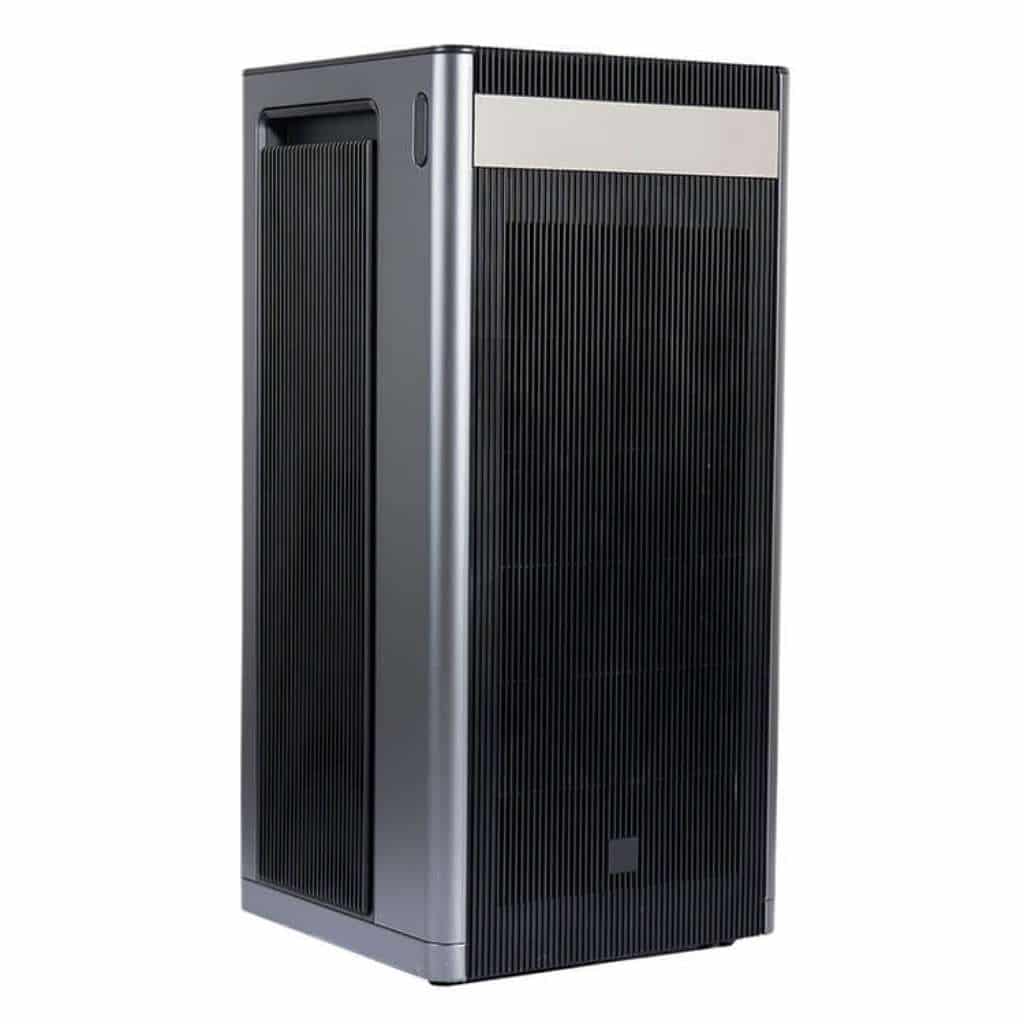
Source de l'image : HisoAir
Commençons cette liste par le modèle HisoAir HA-1968. Cette gamme particulière de purificateurs d'air est conçue pour les grands espaces, tels que les bureaux, les écoles et les propriétés commerciales. Il peut effectuer une purification complète de l'air, grâce à son taux élevé de distribution d'air pur (CADR) de 1 500 m3/h. Ce chiffre indique que ce purificateur d'air peut traiter et purifier l'air efficacement, même s'il est placé dans des pièces de grande superficie.
De plus, ce purificateur d'air est équipé de filtres impeccables. Son filtre à charbon actif fonctionne très bien pour capturer les substances gazeuses, comme le radon. Il excelle également dans l'élimination des composés organiques volatils et d'autres produits chimiques susceptibles de provoquer des problèmes pulmonaires. Il est également doté d'une interface ergonomique qui vous permet de l'utiliser correctement en fonction de vos besoins.
| AVANTAGES | CONS |
|
|
2. HisoAir Modèle HA-1601
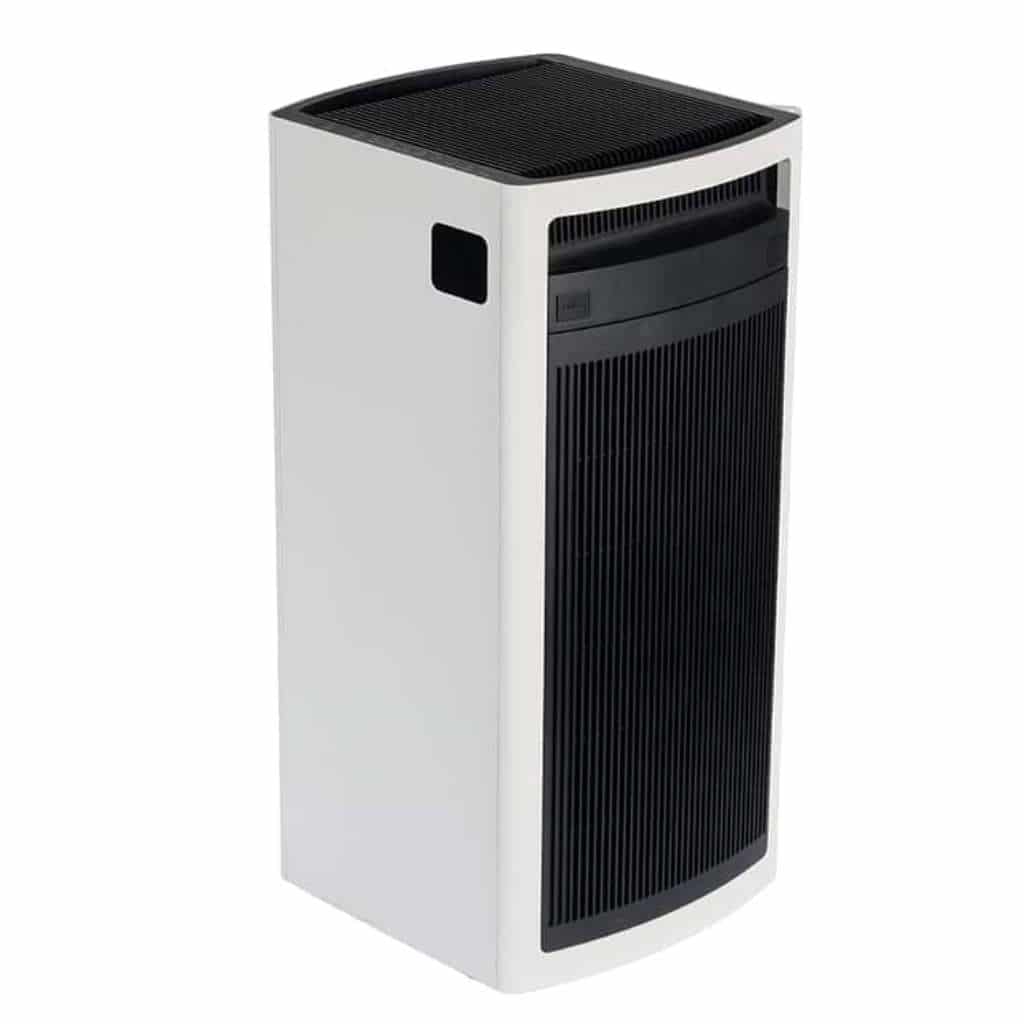
Source de l'image : HisoAir
Si vous souhaitez maintenir un niveau sûr de radon dans votre maison, vous devez installer le modèle HisoAir HA-1601. Ce purificateur d'air est conçu pour fonctionner dans les zones où les polluants atmosphériques sont fortement concentrés, comme les sous-sols et les espaces de vie. Il constitue un outil efficace pour capturer le radon, grâce à son filtre à charbon actif de haute qualité. Ce dernier adsorbe diverses substances gazeuses, les empêchant ainsi de circuler à nouveau dans l'air.
Par ailleurs, le modèle HisoAir HA-1601 est conçu pour être économe en énergie. Il peut fonctionner en continu sans faire grimper votre facture d'électricité. Il s'agit d'une caractéristique essentielle pour les espaces qui nécessitent une purification constante de l'air. Il fonctionne également silencieusement afin de ne pas devenir une nuisance dans votre maison, quel que soit l'endroit où vous le placez.
| AVANTAGES | CONS |
|
|
3. Modèle HisoAir HA-139
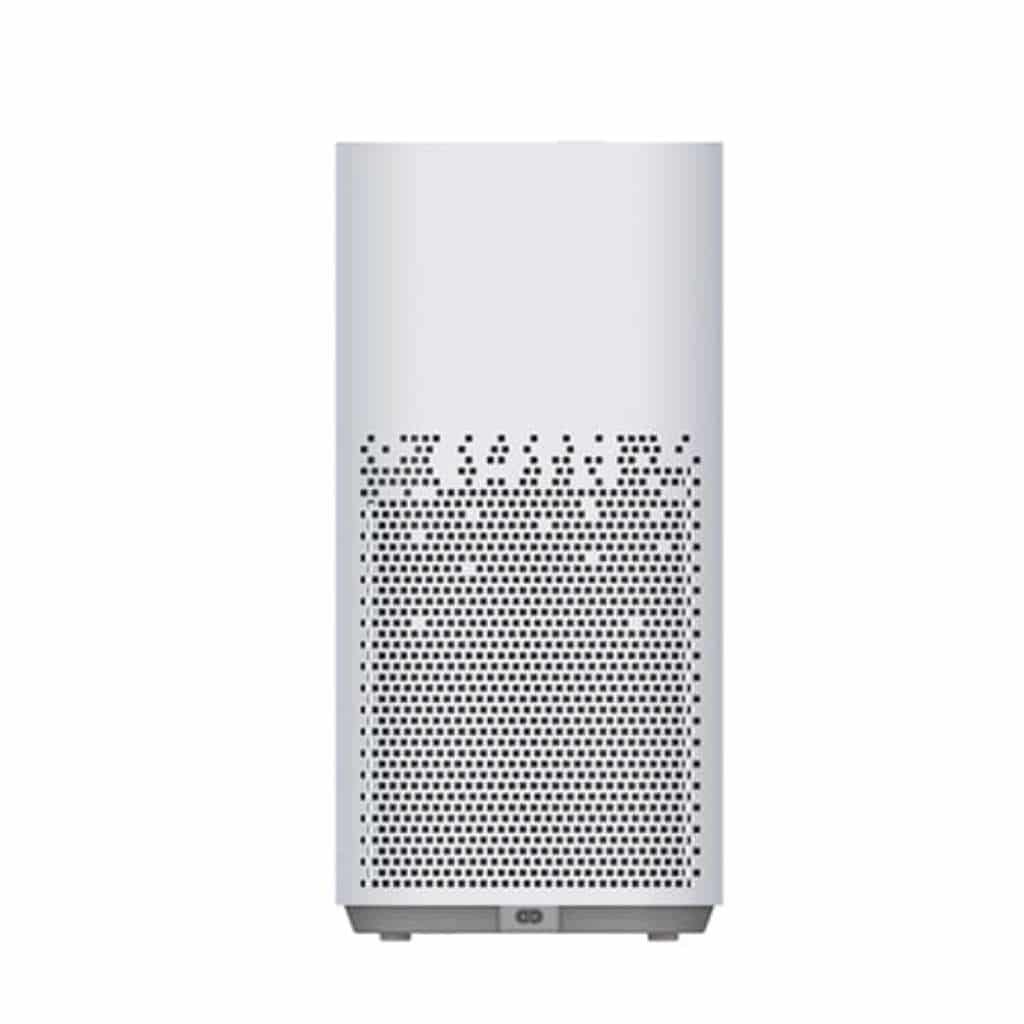
Source de l'image : HisoAir
Lorsqu'il s'agit d'éliminer les polluants gazeux et chimiques, vous pouvez toujours faire confiance au modèle HisoAir HA-139. Ce purificateur d'air est doté d'un filtre à charbon innovant qui retient les substances gazeuses et les contaminants odorants. Il permet de conserver un air frais, propre et respirable. Il comprend également d'autres filtres essentiels, tels que le filtre HEPA, qui empêche la prolifération des polluants microscopiques en suspension dans l'air.
L'utilisation de ce purificateur d'air ne vous causera jamais de maux de tête. Toutes ses commandes sont assez simples, ce qui vous permet d'ajuster ses paramètres quand vous le souhaitez. Il est intéressant de noter que ce purificateur d'air comprend également des capteurs de qualité de l'air. Cela vous permet de savoir si l'air que vous respirez est exempt de particules potentiellement pathogènes. Dans l'ensemble, le modèle HisoAir HA-139 est un excellent purificateur d'air pour diverses applications.
| AVANTAGES | CONS |
|
|
Comment prévenir l'accumulation de radon après l'enlèvement des déchets
En fonction de la gravité du problème, vous pouvez prendre certaines mesures pour éviter que votre maison ne contienne du radon. Voici quelques-unes de ces stratégies :
- Vous devriez envisager d'améliorer le système de revêtement de sol de votre maison, surtout si elle n'a pas de vide sanitaire. Pour ce faire, vous pouvez placer une couche perméable aux gaz sous le revêtement de sol. Une épaisse couche de gravier peut faire l'affaire. Ensuite, vous devez la recouvrir d'une feuille de plastique afin d'empêcher le radon de passer.
- Ensuite, vous devriez envisager d'installer un tuyau étanche au gaz depuis le vide sanitaire ou le sous-sol vers le toit. Ce tuyau permettra d'évacuer les éléments gazeux du sol et de les éloigner de votre maison.
- Une approche intéressante consiste à faire passer une ligne électrique dans votre grenier. Vous pouvez ainsi y installer un ventilateur. Il transformera le tuyau en système d'aspiration, absorbant le gaz et les produits chimiques hors de votre maison.
- Bien entendu, une ventilation suffisante de votre maison peut également contribuer à réduire la contamination par le radon.
Autres moyens de se débarrasser du radon
Le radon étant un gaz naturel, il n'est pas facile de l'éradiquer. Après tout, le radon peut exister à l'extérieur de votre propriété. Il finira par pénétrer dans vos maisons et vos bâtiments.
L'accumulation de radon est un problème, étant donné qu'il n'existe pas de niveau de sécurité. La meilleure chose à faire est de la réduire au niveau le plus bas possible. Voici comment procéder.
Trouver un professionnel
La première chose à faire est de prendre contact avec un professionnel qualifié pour évaluer et traiter votre situation. Aux États-Unis, il existe des programmes nationaux de compétence en matière de radon qui vous permettent d'entrer en contact avec ces professionnels.
Lorsque le niveau de radon est élevé, des interventions techniques et spécialisées sont nécessaires. Si l'entrepreneur n'est pas professionnel, le problème ne disparaîtra pas. En fait, il risque de s'aggraver. Une fois qu'un entrepreneur professionnel est présent, il est en mesure de vous fournir les solutions appropriées. Mais bien sûr, cela a un coût.
Dépressurisation active des sols
L'une des solutions spécifiques pour contrôler les niveaux de radon est un système de dépressurisation du sol. Ce système ne nécessite pas de rénovations importantes de votre maison ou de votre bâtiment.
Cette méthode est généralement préférée par les propriétaires parce qu'elle est rentable. Il s'agit d'une méthode courante dans les maisons dont les sous-sols sont recouverts d'un sol en béton. Avec cette méthode, la pression de l'air entre le sol et l'intérieur est inversée. Cela empêche la pénétration du radon dans votre maison.
Là encore, le recours à un professionnel vous permettra de savoir si cette méthode de réduction du radon est applicable à votre situation.
Dépressurisation des murs en blocs
Ce système particulier de réduction du radon utilise des conduits et un ventilateur. Ces deux éléments sont conçus pour aspirer le radon par les ouvertures creuses des murs en parpaings. Cette méthode fonctionne essentiellement si les murs de votre maison sont faits de parpaings ou de matériaux similaires.
Pour que cette méthode soit efficace, il faut s'assurer que la pression de l'air dans les cavités est inférieure à la pression de l'air dans le sous-sol. C'est dans ce dernier que les composants d'aspiration et de tuyauterie seront installés. Grâce à la différence de pression de l'air, le radon est aspiré du sol. Le radon est ainsi dispersé avant de pénétrer dans votre maison.
Cette méthode particulière est très efficace mais nécessite des entrepreneurs qualifiés. En outre, elle n'est recommandée que si le niveau de radon est supérieur à quatre picocuries par litre d'air (pCI/L).
Sceller les fissures et les lacunes
Si les niveaux de radon dans votre maison ne sont pas élevés, il y a des méthodes que vous pouvez utiliser pour qu'ils le restent. L'une de ces stratégies consiste à effectuer des réparations, en ciblant les fissures et les interstices dans les murs et les sols.
En effectuant ces réparations simples, vous serez en mesure d'empêcher l'entrée dudit gaz à l'intérieur de votre maison. L'avantage de ces réparations, c'est que vous pouvez les effectuer vous-même. Il est essentiel d'avoir les bons produits d'étanchéité, tels que les calfeutrages et les enduits.
Bien entendu, si les dégâts sont trop importants, vous devrez faire appel à des entrepreneurs professionnels pour les réparer. Les réparations complètes sont coûteuses, mais elles peuvent réellement prévenir l'accumulation de radon.
Conclusion
Comme vous pouvez le constater, l'accumulation de radon est dangereuse pour la santé. Elle peut entraîner de nombreuses complications, surtout en cas d'exposition prolongée. C'est pourquoi des mesures d'atténuation appropriées doivent être mises en œuvre pour les maisons et les propriétés qui présentent des niveaux élevés de radon.
L'installation de purificateurs d'air de haute qualité peut prévenir la pollution par le radon à l'intérieur de votre maison. Grâce à leurs filtres à charbon, le radon ne pourra jamais proliférer dans votre maison. Visitez le site HisoAir et découvrez quelques-uns des meilleurs purificateurs d'air pour le radon !
Consultez également nos autres blogs informatifs !


